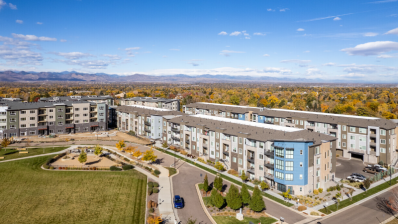Starting back (all the way back) in the 1990’s, the term “retail apocalypse” began appearing in the news. Full of shock and awe, this term was coined in response to the advent of e-commerce, which led to significant brick-and-mortar store closures. As the dust cleared and industry experts began to look more closely, they realized retail wasn’t dead–it was evolving.
Fast forward to today and retail is entering the next phase of its evolution, driven mainly by the fallout from the COVID-19 pandemic. As many retail centers suffered from low foot traffic amid government-mandated shutdowns, a revived misperception of the death of retail caused it, once again, to massively fall out of favor with investors. Subsequently, valuations fell and liquidity dried up for this asset class.
As the dust from the pandemic begins to settle, the retail sector is poised to thrive over the next few years, which we believe will create opportunities for investors. Here’s why.
Foot-traffic is returning to retail. Earlier this year, Forbes reported that in 2021 brick and mortar retail sales growth surpassed online retail sales growth for the first time. Tempered from the 31.8% growth that we saw in 2020, e-commerce retail sales growth was 14.2%, with brick and mortar retail sales growth at 18.5%. This reversal of growth trends suggests to us that the e-commerce boom that we experienced during the pandemic, which was accelerated by a reliance on online-shopping, is reverting to its long-term trend, bringing activity back from the couch to in-person shopping, which in turn is benefitting the profitability of these retail centers.
Figure 1: Brick and Mortar Sales Growth Surpasses E-Commerce Sales Growth
Source: “Brick And Mortar Sales Grew Faster Than E-Commerce In 2021”, Forbes.
Any retail center that is functioning reasonably well today may have a good chance of functioning even better tomorrow because of what it has endured. Not only is activity returning, the retail sector now looks battle-tested. The pressure on businesses during the pandemic proved to be too much for the nation’s weaker retailers, resulting in a pruning of sorts for the sector. While there may have been weaker retailers that were hanging on in certain centers up to 2019, those types of tenants are now long gone. Those that remain appear markedly resilient. In essence, if you’ve made it all the way through the pandemic to the fall of 2022 and are now experiencing growth in sales, what is the probability that you fail within the next few years? Lower than at any point in recent history, in our opinion, which makes us feel confident about the overall viability of retail centers in the years ahead.
Another reason we believe opportunities for investors exist in retail real estate comes down to supply and demand. Retail has experienced very little new supply in recent years, meaning that virtually any uptick in demand typically translates into higher occupancy levels and upward pressure on rents in existing space.. In Q2 2022, U.S. retail vacancy fell to 6.1%, a 15-year low. This limited availability drove asking rents to be 16% higher than five years ago, according to Cushman & Wakefield. New construction in retail is so rare that only about 62 million square feet are currently under construction nationally, representing just 0.5% of the total U.S. inventory. Twice as many retail store openings were announced in 2022 as compared to store closures, which not only highlights confidence in physical store locations but could also mean vacancies could drop further. Every day, new food concepts, restaurants, and businesses are reviving the retail scene, strengthening the overall demand for this sector post-pandemic.
Considering that new construction in the retail sector is relatively stagnant, yet we are seeing increased foot traffic, and a resurgence of growth in brick-and-mortar store sales with battle-tested retailers, we believe retail may be overlooked from an investment standpoint. It’s one of the few sectors that may still deliver a strong cash yield in today’s high-interest rate environment, and the durability of that cash flow is arguably better than it’s been in nearly a decade.
While we are bullish on retail sector dynamics, it is fair to say that our admiration is limited to certain subsets. Overall, retail is a mixed bag that includes malls, neighborhood centers, and strip centers. Of the various types of retail real estate, we believe that grocery-anchored neighborhood shopping centers are best positioned. According to JLL’s Grocery Tracker report, grocery-anchored stores were in high demand in 2021, with $13.3 billion in total sales volume, which was, “the largest share of any retail property type for the third year in a row and the second-highest level in recorded history.” Conversely, we are less enthusiastic about traditional malls, as we view their negative net absorption trend - meaning more tenants are moving out than moving in - as not reversing in the near term.
Choosing the right investment is always a matter of careful scrutiny, but where we are able to identify high-quality retail centers that are backed by strong anchors and sponsors with domain expertise, we are inclined to lean into those opportunities and make them available for CrowdStreet investors.


